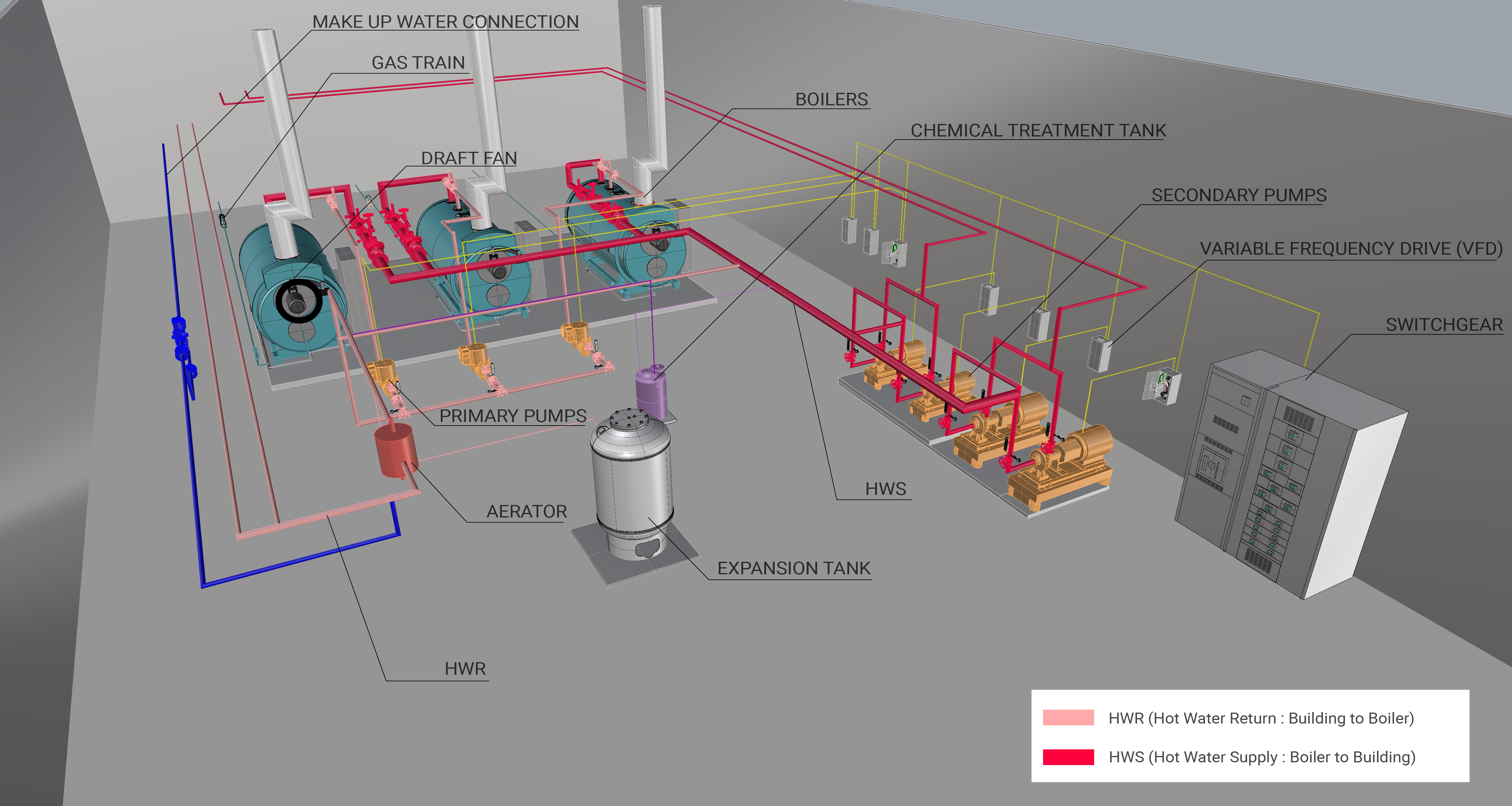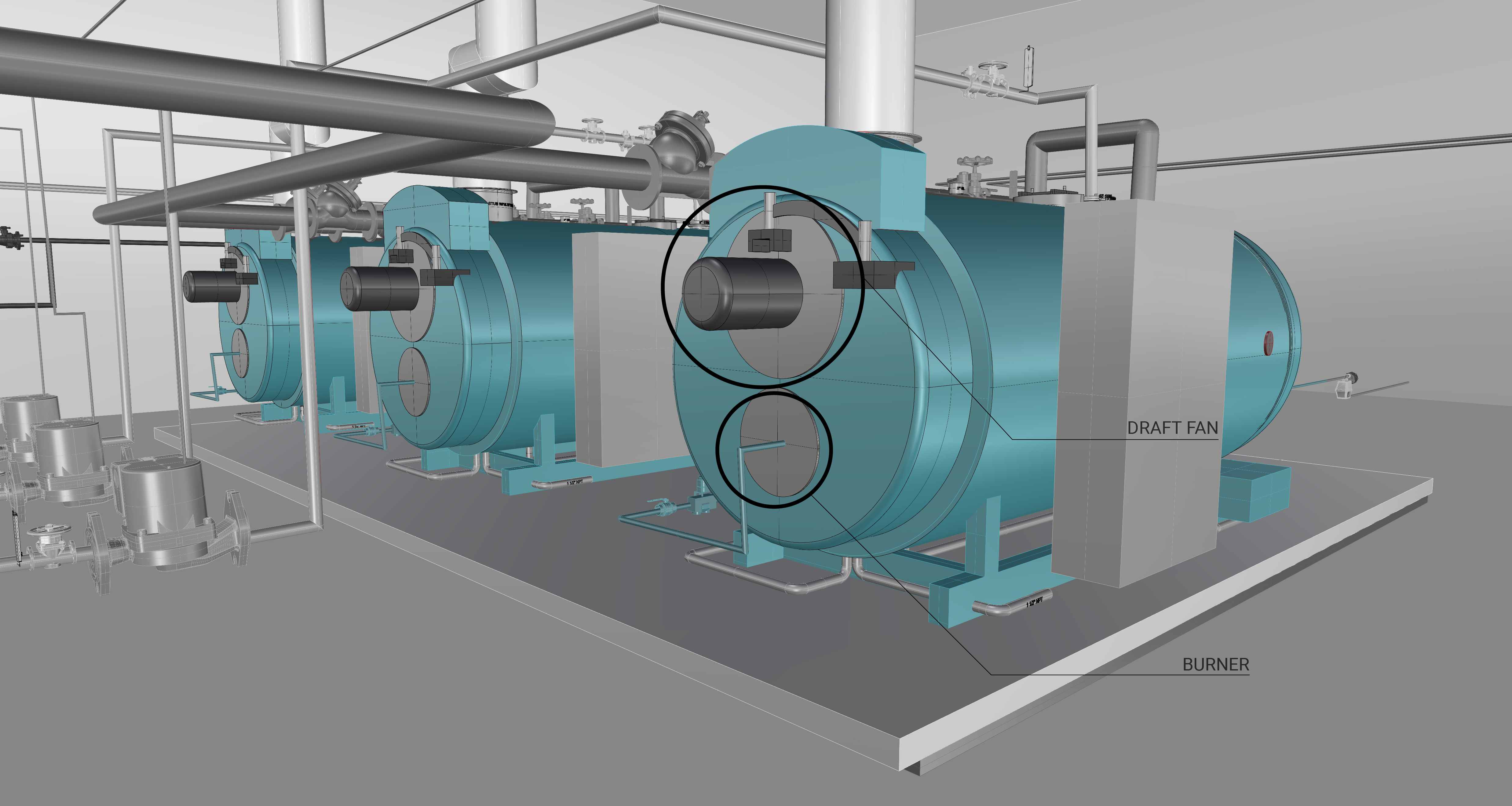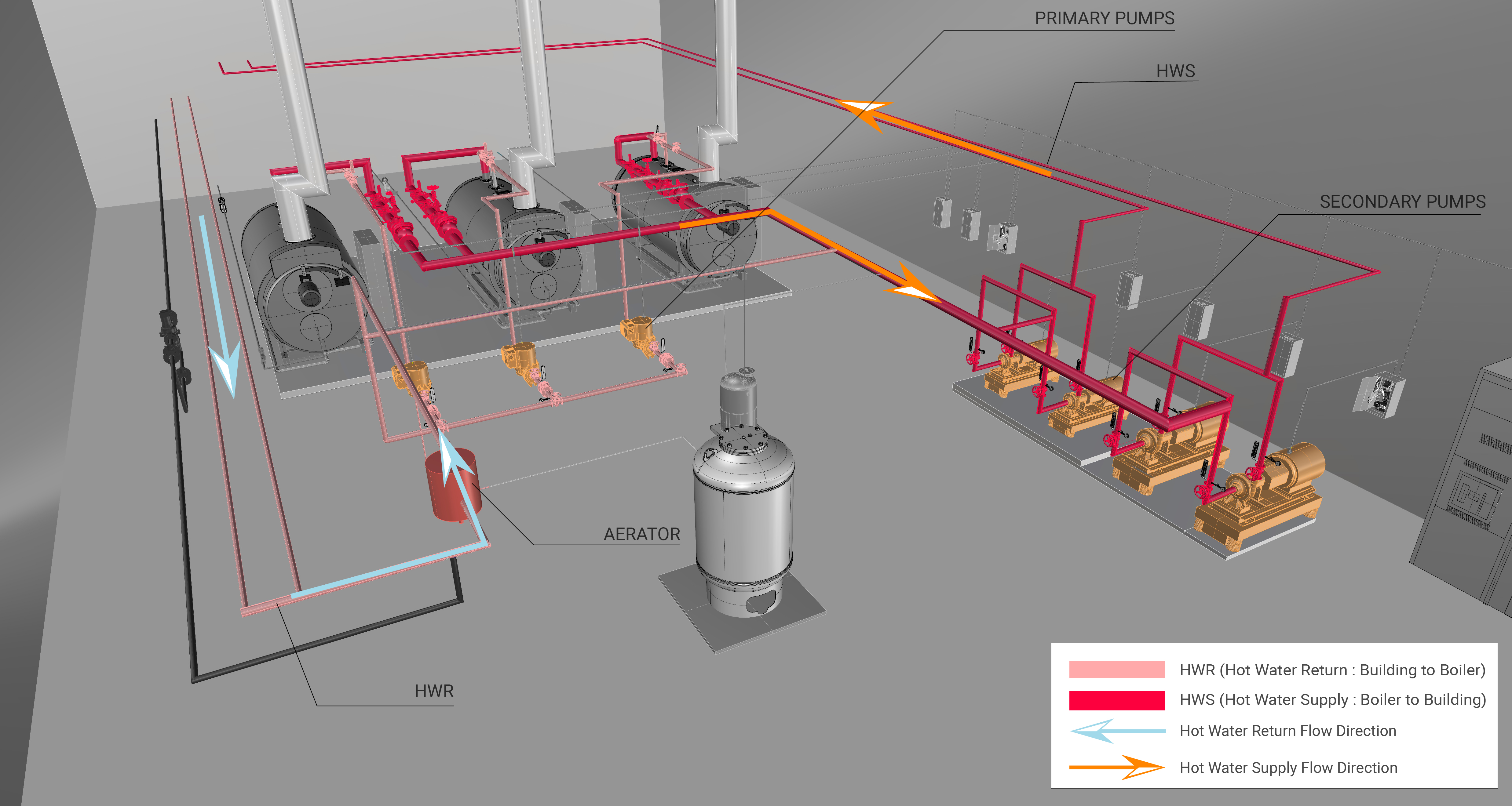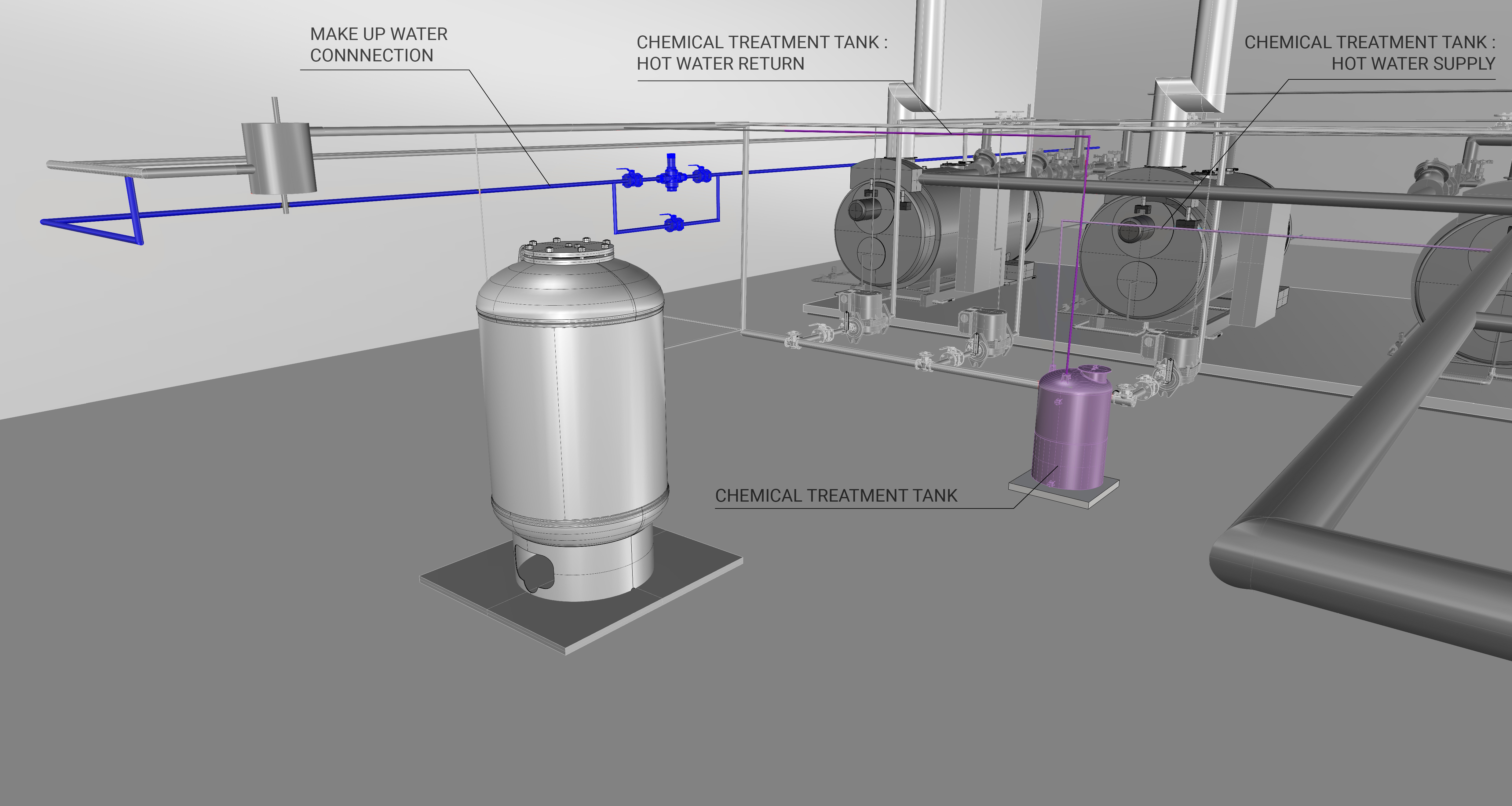General Overview
The hot water heating (HWH) plant uses input energy (e.g., fuel, electricity, or biomass) to generate hot water, which is distributed throughout a facility for space heating. An HWH boiler may also produce hot water for other demands, such as domestic hot water or process heat. A hot water heating plant typically consists of a hot water heating boiler, a feedwater system, and a hot water heating loop.

Systems
Hot Water Heating Boiler
The HWH boiler system is the largest energy-consuming component of the hot water heating plant. Hot water is primarily generated through heat transfer from combustion gases in the combustion chamber to the water. The heated water is then distributed throughout the facility to meet space heating or domestic hot water demands. The main components of an HWH boiler system include the burner, combustion chamber, heat exchanger, and draft fan, as shown in Figure 2. Learn More

Hot Water Loop
The hot water loop system encompasses the distribution system responsible for moving hot water throughout the building. Components of a typical hot water loop system are primary-only or primary-secondary pumps, piping network and piping insulation and are shown in Figure 3. Learn More

Feedwater System
The feedwater system provides treated make-up water and returned hot water from the hot water loop. Feedwater requires proper treatment to remove pollutants and preserve the efficiency of the boiler. Figure 4 shows the components for the feedwater system. Learn More

Evaluation of Energy Conumption
The total energy consumption of an HWH plant is the sum of the energy used by its individual components. This includes the fuel consumed by the boiler to meet the heating load and the electricity required to operate the burner fan motor, primary and secondary pumps, and feedwater pump. Table 1 summarizes the system component measurements and values needed to quantify the annual energy consumption and operating characteristics of the HWH plant.
| Plant Quantification | Values to be Quantified | Energy Consuming Component |
|---|---|---|
| Hot water heating plant fuel consumption (Btu) | Average hourly fuel consumption (Btuh) | Boiler |
| Hot water heating plant electricity consumption (kWh) | ||
| Heat load delivered | Average hourly heat rejected from the hot water loop (Btu/h) | Terminal Units |
| Heat recovered | Average hourly heat delivered to the make-up water (Btu/h) | Heat exchanger (if present) |
Further Reading
- ASHRAE (2020). “ASHRAE Handbook: HVAC Systems and Equipment,” Chapter 32. BOILERS. I-P Edition.


